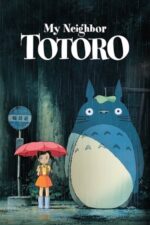More Than Just Houses: Exploring the Enduring Power of the Village in Cinema
There's something inherently captivating about the village on film, isn’t there? It’s more than just a collection of houses and fields; it represents community, tradition, isolation, and often, a simmering pot of secrets. We see it reflected across genres and eras – from idyllic pastoral settings to claustrophobic landscapes steeped in dread – and each portrayal offers something unique about the human condition.
Think about it: when filmmakers want to explore themes of folklore and superstition, where do they take us? Often, to a remote village nestled deep within the woods. "The Winter Witch," for example, brilliantly uses the setting of a secluded community to amplify the fear and paranoia surrounding Frau Perchta’s legend. The close proximity of the villagers, their shared history, and reliance on each other only intensifies the suspicion when tragedy strikes. It's that sense of interconnectedness – both positive and negative – that makes the village such fertile ground for suspenseful storytelling.
But villages aren’t always places of darkness. "The Last Front," depicting life in a Belgian village during World War I, showcases the resilience of community amidst unimaginable horror. The Lambert family’s story, intertwined with a tender romance blossoming against the backdrop of war, highlights the enduring human need for connection and hope even when everything seems lost. It's a stark contrast to the isolation often portrayed, but equally powerful in its own right.
What I find particularly fascinating is how the village setting can be used to examine broader societal shifts. "In the Fire," with its clash between science and faith in a late 1800s plantation community, uses the village as a microcosm of a world grappling with modernity and tradition. The doctor’s arrival disrupts the established order, forcing the villagers – and the priest – to confront their beliefs. It's a reminder that even seemingly isolated communities are touched by larger cultural currents.
And then there's the more recent trend of exploring villages as repositories of ancient power, like in "Maghrib Time 2," where a curse unleashes an evil spirit upon a community steeped in superstition. Or “The Noise of Time,” which uses the threatened existence of Xoco to explore themes of cultural preservation and the fight against homogenization – something that feels incredibly relevant in our increasingly globalized world.
Even films like "Love Lessons," with its focus on Eliza’s desperate journey, use the village setting to underscore the importance of familial bonds and the sacrifices we make for those we love. It's a reminder that even within seemingly simple narratives, the village can represent something profound about human connection.
Ultimately, the enduring appeal of the village in cinema lies in its ability to reflect our deepest fears, hopes, and anxieties. It’s a space where individual stories become intertwined with collective histories, creating a powerful canvas for exploring what it means to be human. So next time you're looking for a film that resonates on a deeper level, consider one set within the confines of a village – you might just discover something truly special.






































